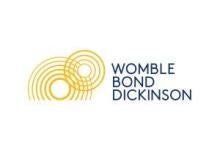This article is a revised and updated version of an earlier article titled “Patent Protection for Entertainment Software Inventions” published on November 29, 2022.
Innovators seeking patent protection for software inventions should be aware that all software inventions face patent-eligibility issues.1 Nevertheless, patent practitioners who are experienced in the art of software patent prosecution can help ensure that software inventions get maximum protection.
The trial-court and appellate-court decisions in the case of Guvera v. Spotify from the Southern District of New York and the Federal Circuit demonstrate the importance of drafting patent applications for software inventions according to a clear technological problem-solution framework to avoid invalidation for having claims directed to ineligible subject matter.2
In September of 2022, Guvera, a patent owner (and former music-streaming company), lost its patent infringement case against the music-streaming giant Spotify after the Southern District of New York held that Guvera's patent claims were not eligible for patent protection.3
Guvera's patent claims involved methods of generating playlists with targeted advertising.4
The Southern District of New York held that the patent claims at issue were directed to an abstract idea, lacked an inventive concept, and were, therefore, ineligible for patent protection under 35 U.S.C. § 101 (“Section 101”).
Ever since the U.S. Supreme Court’s Alice decision in 2014, Section 101 has been used to invalidate countless software patents.5 Alice and subsequent Section-101 case law have established that patent claims for software inventions must include features that provide technological improvements.6
The Alice decision was intended, in part, to stop patents from being granted for basic and well-known concepts (i.e., abstract ideas) merely implemented by way of a generic computer.7 As the Southern District of New York noted in Guvera v. Spotify, “merely adding computer functionality to increase the speed or efficiency of the process does not confer patent eligibility.”8
Applying the Alice two-step test for subject-matter eligibility, the Southern District of New York, in Guvera v. Spotify, first determined that Guvera's patent claims were “directed to the abstract idea of matching content using data identifiers.”9
Next, the Southern District of New York determined that the patent claims did not contain an “inventive concept” and, thus, did not add significantly more to the abstract idea of content matching because, “[a]t bottom, the claims recite the process for implementing the abstract idea of matching content on a computer,” and, “[a]t best, the patent improves the efficiency of content matching....”10
The Southern District of New York noted that Guvera failed to “allege… what ‘unconventional technological solution’ it provide[d] to a ‘technological problem.’”11
On appeal before the Federal Circuit, Guvera interestingly declared in its opening brief that its patent “solves a marketing problem.”12 Spotify, in its response brief, seized on the opportunity to point out “Guvera even concedes that its alleged invention is intended to ‘solve[] a marketing problem’ rather than a technological one.”13
The Federal Circuit affirmed the decision of the Southern District of New York under Federal Circuit Rule 36 without opinion.14
It is important to note that Guvera’s patent was filed with the United States Patent and Trademark Office (USPTO) on December 15, 2010, almost four years before the Alice decision on June 19, 2014.
Furthermore, a notice of allowance was issued in the application on November 5, 2014, before the first USPTO subject-matter-eligibility guidance examples, 1-36, were published on December 16, 2014.
Thus, Guvera’s patent application could not have been drafted with the benefit of the case law and USPTO administrative guidance that followed.
The USPTO published subject-matter-eligibility guidance examples 37-46 in 2019 and published examples 47-49 in 2024.
The guidance was updated in 2019 to: (i) provide a two-prong inquiry under step one of the Alice two-step test—for determining whether additional claim elements integrate a judicial exception (e.g., an abstract idea) into a practical application—and (ii) provide explicit subcategories of abstract ideas (e.g., mathematical concepts, methods of organizing human activity, and mental processes).15
The guidance was updated in 2024 to assist with determining eligibility of claims involving artificial intelligence-related technology.16
The USPTO guidance examples can be useful for understanding differences between example eligible claims and example ineligible claims to the same subject matter.
How could Guvera's patent application have been written differently to avoid a determination of invalidity under Section 101?
One of the more reliable ways to overcome a challenge under Section 101 is to show that some of the features in the patent claims provide an improvement to computer functionality. Under Section-101 case law, patent claims that are directed to an improvement to computer functionality are not directed to an abstract idea and are, therefore, patent eligible.17
One of the more reliable ways to show that features in the patent claims provide an improvement to computer functionality is to describe those features, in the detailed description of the patent application, within a technological problem-solution framework.
One way to determine whether a technological problem-solution framework has been provided for a feature is to ask whether the patent application explains how that feature makes the computer (i.e., the device on which the software feature runs) operate more efficiently than with other approaches.
For example, software instructions are typically executed using some type of hardware processor and memory. In many cases, some portion of the detailed description can be drafted to emphasize how the processor and the memory operate more efficiently as a result of some of the claimed features.
Guvera was unable to show that its claimed approach provided an improvement to computer functionality because its patent did not include a clear technological problem-solution statement.18
Therefore, Guvera’s patent provides insight into when a software patent might be in danger of being invalidated under Section 101.
In summation, when determining whether a software invention is eligible for patent protection, try to think of the idea in terms of how it improves computer functionality in a way that is different from other approaches.
1 See, e.g., Alice Corp. Pty. Ltd. v. CLS Bank Int’l, 573 U.S. 208 (2014) (setting forth a two-step test for patent subject-matter eligibility that turned the software-patent world upside down).
2 Guvera IP Pty Ltd. v. Spotify, Inc., No. 21-CV-4544 (JMF), 2022 WL 4537999 (S.D.N.Y. Sept. 28, 2022); Guvera IP Pty Ltd. v. Spotify USA Inc., No. 2023-1493, 2024 WL 1433505 (Fed. Cir. Apr. 3, 2024).
3 Guvera v. Spotify, 2022 WL 4537999, at *1.
4 See U.S. Patent No. 8,977,633 (filed Dec. 15, 2010).
5 Alice, 573 U.S. 208 (2014).
6 See, e.g., Enfish, LLC v. Microsoft Corp., 822 F.3d 1327, 1335 (Fed. Cir. 2016); BASCOM Glob. Internet Servs., v. AT&T Mobility LLC, 827 F.3d 1341, 1349 (Fed. Cir. 2016).
7 See, e.g., Alice, 573 U.S. at 223.
8 Guvera v. Spotify, 2022 WL 4537999, at *7.
9 Id. at *4.
10 Id. at *7.
11 Id. (emphasis added).
12 Opening Brief of Appellant Guvera IP Pty Ltd. at 4, Guvera v. Spotify, 2024 WL 1433505, (No. 10) (emphasis added).
13 Spotify USA, Inc.’s Response Brief at 2, Guvera v. Spotify, 2024 WL 1433505, (No. 13) (emphasis added).
14 Judgment at 1, Guvera v. Spotify, 2024 WL 1433505, (No. 27).
15 See, e.g., USPTO, Frequently Asked Questions (FAQs) on the 2019 Revised Patent Subject Matter Eligibility Guidance (“2019 PEG”), 2 (2019), https://www.uspto.gov/sites/default/files/documents/faqs_on_2019peg_20190107.pdf.
16 2024 Guidance Update on Patent Subject Matter Eligibility, Including on Artificial Intelligence, 89 Fed. Reg. 58,128 (July 17, 2024).
17 Enfish, 822 F.3d at 1335 (explaining that it is “relevant to ask whether the claims are directed to an improvement to computer functionality versus being directed to an abstract idea... for which computers are invoked merely as a tool”).
18 See Guvera v. Spotify, 2022 WL 4537999, at *7.




 />i
/>i

